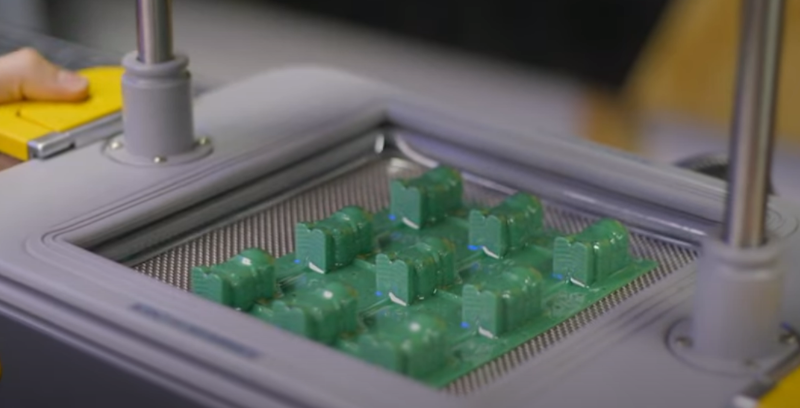[Matterhackers] has a nice video tutorial on using vacuum forming to create plastic items. Sure, you have a 3D printer, but vacuum forming has some advantages if you are making thin and flexible items quickly. But don’t feel bad. The master item in the process is from a 3D printer. Like a mold, the forming won’t produce a duplicate of the master, called a buck. Rather, the buck provides something like a die that the plastic wraps around.
While obvious vacuum-formed items include such things as take-out food containers and plastic blister packaging for retail items, you can also make more substantial items. Apparently, all theStar Wars movies in the original trilogy used vacuum forming to create stormtrooper armor.
Like many fabrication technologies, there are special design rules. For example, you can’t have any overhangs or else the plastic will not release from the buck. In fact, ideally, the buck will have a slight slope on all sides so that the bottom is wider than the top to simplify separating the buck from the finished product.
Another concern with a 3D printed buck is that the plastic will completely conform to the surface. So if you have layer lines or other irregularities, they will show up in the finished product also. You may not care or you may want to sand and possibly seal the print. Of course, you can make the buck out of anything that can withstand the heat including, according to the post, including a raw potato. While PLA is iffy because of the heat, the post indicates that they have used normal PLA successfully by increasing the number of top layers when printing. However, using an advanced PLA with a higher temperature, ABS, or PETG is recommended.
The Makyu Formbox hooks up to a shop vac or household vacuum cleaner to provide the negative pressure. The device — which unsurprisingly [Matterhackers] sells isn’t dirt cheap, but we can remember paying more for a 3D printer (the cheapest option is about $700).
If you’d rather DIY, grab some MDF and check out these plans. Or, go for something a little larger.
















This is far too easy to replicate to pay such an amount, besides shouldn’t the DIY version be covered being this is hackaday?
Check out the last two links…
Is the used plastic food safe?
Yes. HDPE, on of the more common plastics used for vacuum forming is food safe per the FDA
The supermarket is full of plastic trays that are all manufactured by thermoforming like this because the food processor can simply and cheaply manufacture containers from roll stock rather than having truckloads of empty containers shipped in. Deli trays are made similarly but the store buys them ready made.
A wide range of materials and laminations are available, all designated as food-safe including PE, PP, PVC, PET etc. Look on the container itself for the recycling symbol to see which one you have.
For processed foods, the tray stock is usually molded from a roll of thicker material, filled, and then a thinner lid stock is used to seal the top. For microwavable foods, PET (polyethylene terephthalate – the same stuff that they make soda bottles with) is used and will take the heat of both microwave and conventional ovens.
So, if your friend tosses the master item to you; is he “passing the buck”?
Well yes, and when you put it in the vacuum former you can tell him “the buck stops here”.
This is a pretty nice build, but the legendary Mattel Vac-U-Form is still out there in large quantities on Ebay and has been a favorite of model makers for years.
That said, with a shop vac, a patient spouse (it involves the kitchen oven) and proper frames/draping/forms etc. you can thermoform a wild, wide range of implements relatively easily.
We had a Vac-U-Form, it’s still in the basement. I thought it was somewhat of a disappointment. The kids at school had Thingmakers, which seemed so much better. Of course, you could make Things in the Vac-U-Form.
It was only in recent years that I read that the Vac-U-Form came first, the Thingmaker moulds first available for it, then a Thingmaker machine released.
So I guess we weren’t second rate for having a Vacu-U-Form.